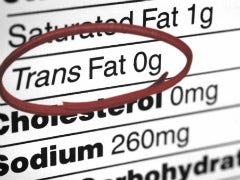5 Food Label Dealbreakers
A quick & easy list of rules to help you navigate nutrition information.

I'm totally confused when I read food labels. What am I supposed to look for?
Sometimes the forces that be make it complicated to know what to eat. There's so much conflicting information available, it's easy to be confused by nutritional information. Therefore, I thought I'd try to cut through some of the label claims and conflicting "truths," and share some of my label dealbreakers that make it easy-peasy to know what to put in your basket ... and what to leave on the shelf.
If you focus only on these dealbreakers, you will significantly improve your diet and your health! Of course, I assume that you have already filled your cart to capacity with loads of fresh, organic, local produce! And, I endorse cooking from scratch whenever possible but, believe me, I know it can't always happen. Depression: A Family Affair
These guidelines are meant to help you make the most of your choices when you're not able to harvest your own rice. Here are my 5 label dealbreakers. This is how I, personally, choose to read food labels and decide what to eat:
1. Scan for the words hydrogenated and/or high-fructose. If a label contains either of those two words, it goes right back on the shelf. The end. Both of those ingredients immediately indicate a low-quality, processed, crapola product that has no business being in your cart or in your body.
2. Scan for the number of ingredients. People have been making bread since the beginning of time. Bread contains flour, water, yeast, and salt. But if you look at some of the breads available in stores, they have about 20 different ingredients — many of them chemicals and preservatives and sugars. Are You Ready To Start Dating Again?
I don't have a set number of ingredients that I look for, but I try to be sure that the ingredient list is reasonable for what the food is. Bread doesn't need a paragraph of ingredients. Neither do corn chips or tomato sauce or salad dressing. Be smart. You don't even have to read all the ingredients, you can just look at the amount of space the ingredients take up on the label. If the list is longer than your mailing address, put it back.
3. Look for what kind of oil is listed. Notice that I am not scanning for how MUCH fat is listed. Rather, I want to know what kind of oil/fat it comes first on the list. I could write a whole separate post about fat and oils but, for now, I will just say that soybean/vegetable oil is in practically everything. It's in sauces, soups, breads, packaged foods, cookies, salad dressings, cereals — you'd be amazed.
For kicks, go check the labels in your kitchen right now and see how much vegetable and soybean oil you already have in your home. Vegetable and soybean oil is cheap to make, shelf-stable ... and they're really, really, really not good for you. And neither is canola oil.
In brief, soybean, vegetable, and canola oils are highly processed, heated products that can wreak havoc on the ratio of your Omega-3 and Omega 6 fatty acids. We're all told to eat more Omega 3's (fish oil, salmon, flax), right? Well, soybean, vegetable, and canola oils are Omega-6 heavy. And though Omega-6 fatty acids are necessary in the right proportion, they are completely overtaking our diets.
We need to eat more 3's and eat less 6's. So choose extra-virgin olive oil, coconut oil, red palm fruit oil instead. Choose any kind of oil that's described as either "cold-pressed" or "unrefined."
4. Look at the sugar content. I prefer not to buy anything with more than nine grams of sugar per serving. I am a big fan of dessert when I am out in restaurants — or the occasional vegan cookie on the go — so I try to do what I can at home to keep my sugar intake low. If a product contains more than nine grams of sugar per serving, it doesn't see the inside of my cart or my home. What 47 Years Of Marriage Can Teach You
5. Look at the fiber content. Fiber is awesome. It's a scrub brush for your insides, and it helps you feel full and stay full longer. To make it into my basket, a product must have at least 2 grams of fiber per serving — ideally more than 4.
The way I see it, there is no point in eating something that's going to leave me feeling hungry 20 minutes later. And I know I have to have fiber if I want to feel full and satisfied. So it just doesn't make sense for me to eat something with little or no fiber in it. I won't do it.
After I have eliminated anything that’s hydrogenated, high in sugar, low in fiber, contains chemicals, preservatives, or undesirable oils, what am I left with? A lot. There are plenty of foods that are well-made and delicious. You just have to know what to look for!
Once I've weeded out all the junky, fake-foods, then I can turn my attention to things like calories and fat content per serving, but, I gotta tell ya. a vast majority of the foods that are left after this initial process are pretty reasonable for calories and fat. I'm usually left with things like whole grain breads and pastas, quality soups and sauces, simple chips and hummos-type dips, salsa, guacamole, chilli, bean dishes, etc. It's usually the foods with dealbreaker ingredients that are undesirable in other ways, too.
Do you have any label dealbreakers that guide you at the grocery store? Please share!
